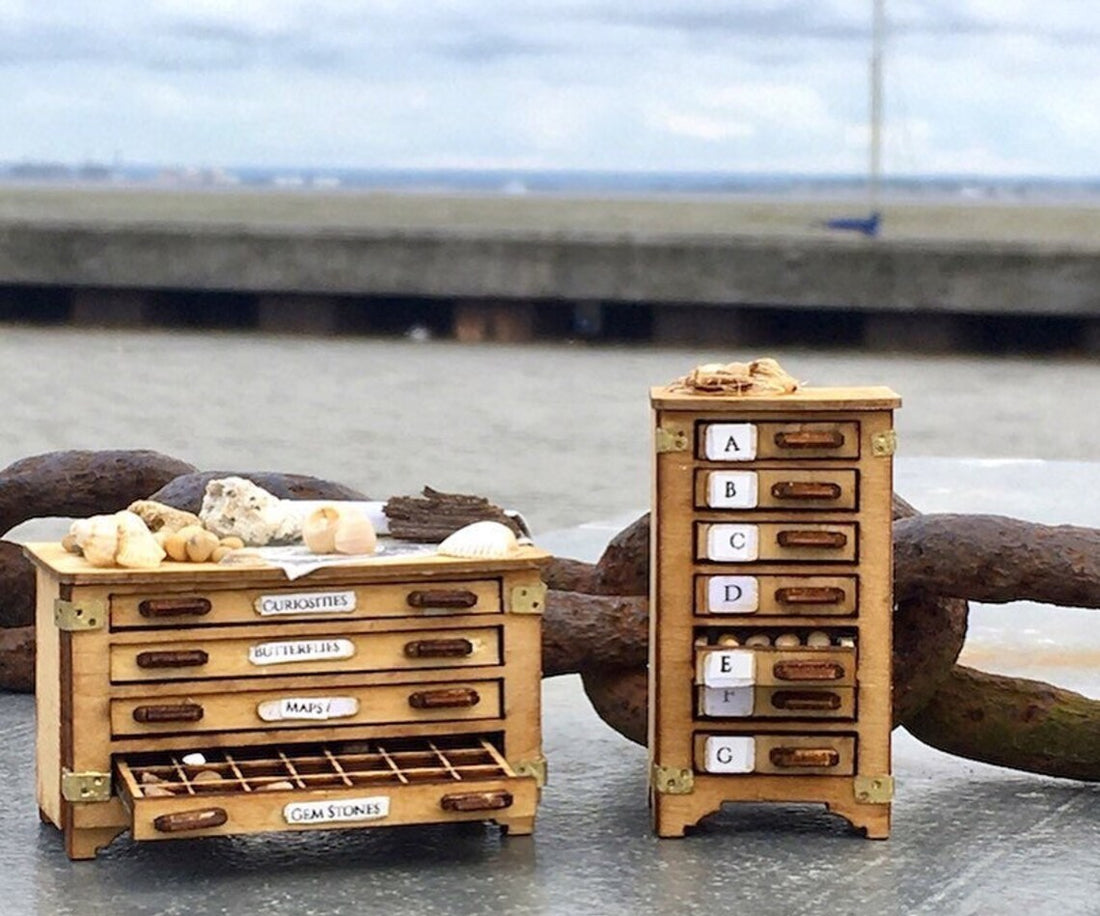
Pro-Advice: Painting

Pro-Advice: Preparation and Painting your miniature dollhouse kit
Possibly the most common question I receive is in regard to painting the kits, so here you will get some hints and tips for the type of paint that I would recommended and how to prepare your surfaces.
The paint is your choice however knowing a few things would be advantageous straight out of the box before you expend a lot of money on the paint.
Personally I prefer to use a solid colour that comes straight out of the tub / pot – emulsion or acrylic. Some acrylics can be shiny so be aware of that. White acrylic is simply terrible unless you buy an expensive brand – by all means use acrylic paints but, where you can splurge on the white or use white ‘Gesso’. ‘Gesso’ is a “tooth” for acrylic and oil painting on board as it is thick – you can use a little water with this to make a nice creamy white which is brilliantly bright and has excellent coverage abilities.
I mix my use of Gesso primer with both acrylics and emulsion paints and they are seem to play nicely together.
- You only need a small amount.
You are only working on a small model so you would find it less expensive and more freeing to use tester pots of paint. These start around the £1.20 and what you get can often do a model or two. Try to get brands that do not include an in-built brush in the lid as this will not be adequate for painting the model and just means you are buying less paint in the container.
Buying a good few of these instead of extending on 1 standard pot of a brand gives you flexibility in choice of colour, often far less outlay and less room taken up. Nowadays you can also get some fabulous heritage colours, again inexpensive as small tester pots.
- The thicker paint the better.
Because you are using wood as a base, most wood is slightly porous and the wetter the paint, the more the surface will absorb the moisture within the paint, the result being that the surface may have a tendency to become rough or fluffy. A lot of water and the panels could warp – solvable on flat panels but very difficult to correct once a model has been put together. A rough surface from paint that is slightly too watery is however normally resolvable with a little sanding but something to be aware of when choosing your paint, or whether to water it down a lot.
- Layer-up.
Consider using either a base coat of primer – a basic light grey or white to seal the wood surface. When this is dry you can gently sand the surface and apply your top colour coat. One tip I have learned when it comes to painting the kits is that I like to sometimes lightly sand between coats to ensure a smooth finish. Another trick is to take a tissue and lightly buff the top coat – this results in a very good top finish and, if continued for a period of time, can slightly provide the surface a nice sheen.
- Seal your finished paintwork
You may choose to use a matte finish sealing agent like matte or satin varnish. If you want a gloss to some of the woodwork such as doors, windowsills etc, then consider using a gloss glue or varnish to accent your model with instead of spending out on expensive varnishes – sometimes you may find this is a better option also due to the odour from many varnishes.
Hopefully with these hints and tips they will help you to achieve a nice finish to your completed models.
- Timing your painting is important
You will often come across prompts in the accompanying journals for the kits that recommend times to paint different elements of the kit. This usually is particularly focused on windows and doors.
Do they include instructions or a guide?
The kits all come with an accompanying guide for a recommended approach to construction – these are fully-illustrated step by step. Obviously you can do things how you prefer but as an insight into how the kits build they may help.
Are the models Glazed?
Yes, the 1:48th scale kits are fully glazed and acetate is provided within each kit for the windows so you don’t need to go hunting for this.
Do they include staircases?
Yes, they do include staircases. Depending upon which kit, the staircase or staircases included will either be staircases with individual steps, or they will be faux staircases which incorporates a wall with access to where the staircase would sit and the bannisters for around the top.
All staircases included in the kits usually include all elements and this comprises of:
- Staircase runners
- Staircase steps
- Staircase handrail
- Banisters
Why are there separate windows?
1:144th kits for the most part (with minor exceptions) have the windows cut into the walls. This is done for strength for the most part.
On the 1:48th kits and 1:72nd kits they predominantly have separate windows to be installed during construction. As they are larger models, they are stronger parts and can cope with more handling. The main benefit of these being separate is that they can sit at towards the rear of the walls so they add another depth element to the model for believability, plus it makes them easier to paint an dadd glazing as separate units. Once the windows have individually been completed as units, and the walls to which they will be added are painted, they can be installed. Any gaps internally can be covered with paper or thin craft card.